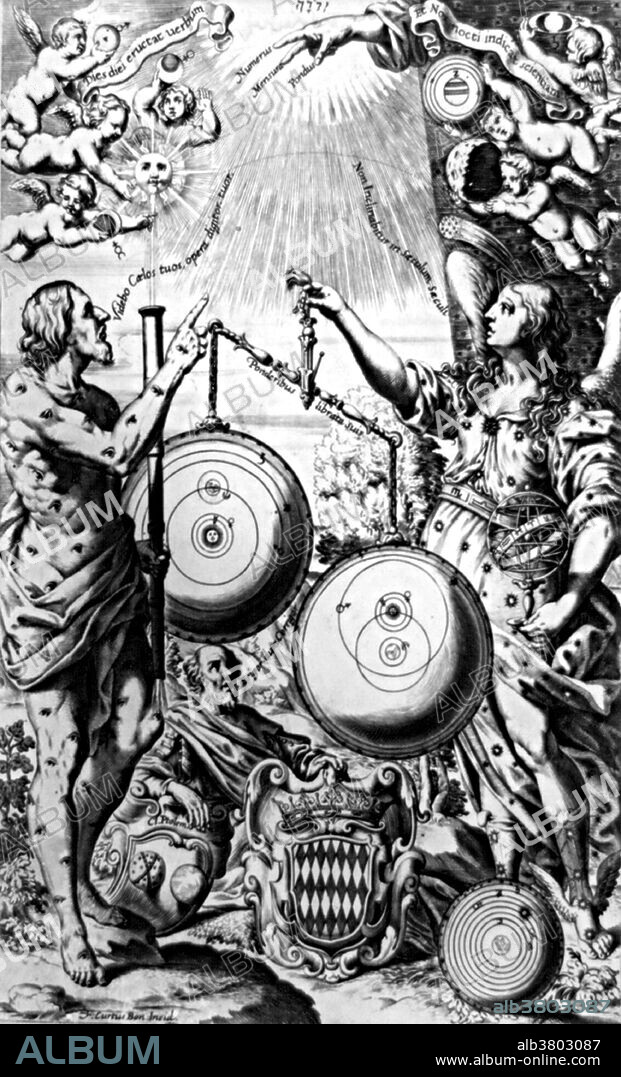alb3803087
Giovanni Riccioli's, Almagestum Novum, 1651

|
Ajouter à une autre Lightbox |
|
Ajouter à une autre Lightbox |



Avez-vous déjà un compte? S'identifier
Vous n'avez pas de compte ? S'inscrire
Acheter cette image

Titre:
Giovanni Riccioli's, Almagestum Novum, 1651
Légende:
Voir la traduction automatique
Riccioli's, Almagestum Novum (1651), depicting Urania, the muse of astronomy, weighing up the rival systems of Copernicus, in which the earth moves round the sun, and Riccioli himself, in which the earth remains stationary at the center of the universe. The older system of Ptolemy has already been discarded and lies on the ground alongside. Giovanni Battista Riccioli (April 17, 1598 - June 25, 1671) was an Italian astronomer and a Catholic priest in the Jesuit order. He is known for his experiments with pendulums and with falling bodies, for his discussion of 126 arguments concerning the motion of the Earth, and for introducing the current scheme of lunar nomenclature. One of Riccioli's most significant works was his 1651 Almagestum Novum (New Almagest), an encyclopedic work consisting of over 1500 folio pages densely packed with text, tables, and illustrations. It became a standard technical reference book for astronomers all over Europe. He continued to publish on both astronomy and theology up to his death. He died in 1671 at the gas of 73.
Crédit:
Album / LOC/Science Source
Autorisations:
Modèle: Non - Propriété: Non
Questions sur les droits?
Questions sur les droits?
Taille de l'image:
3000 x 4948 px | 42.5 MB
Taille d'impression:
25.4 x 41.9 cm | 10.0 x 16.5 in (300 dpi)
Mots clés:
ABBE, CLERGE • ASTRONOMIE • CATHOLIQUE (ADJECTIF) • CATHOLIQUE (PERSONNE) • CATHOLIQUE • CLERGE, ABBE • COSMOLOGIE • COSMOS • CURE • DIAGRAMME • EUROPÉEN • HELIOCENTRISME • ILLUSTRATION • JESUITE • JESUITES (ORDRE) • JESUITES MOINES • JESUITES • MOINES JESUITES • ORDRE, JESUITE • PRÊTE • PRETRE • SCIENCE: ASTRONOMIE • SYSTEME SOLAIRE
 Pinterest
Pinterest Twitter
Twitter Facebook
Facebook Copier le lien
Copier le lien Email
Email
